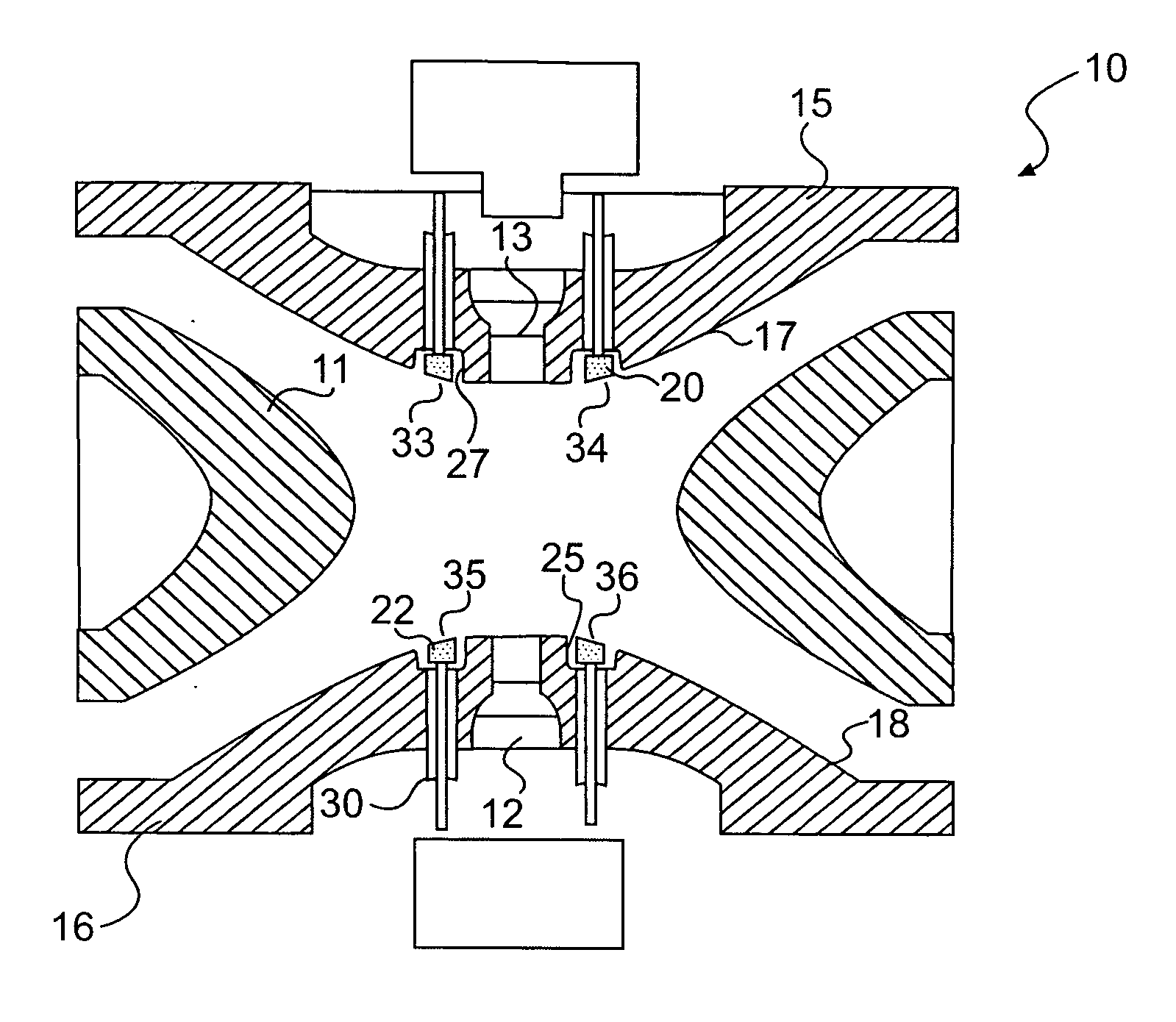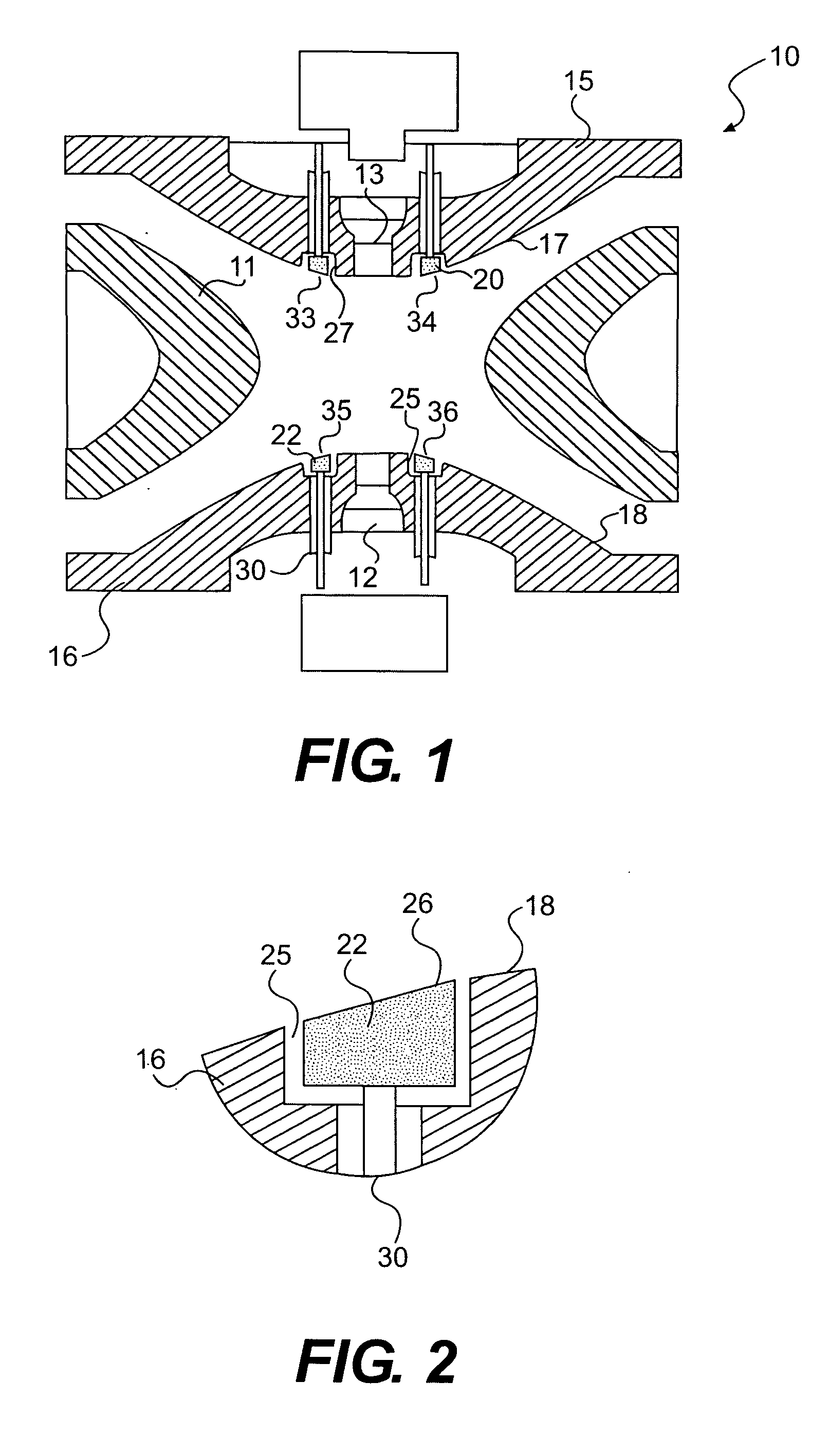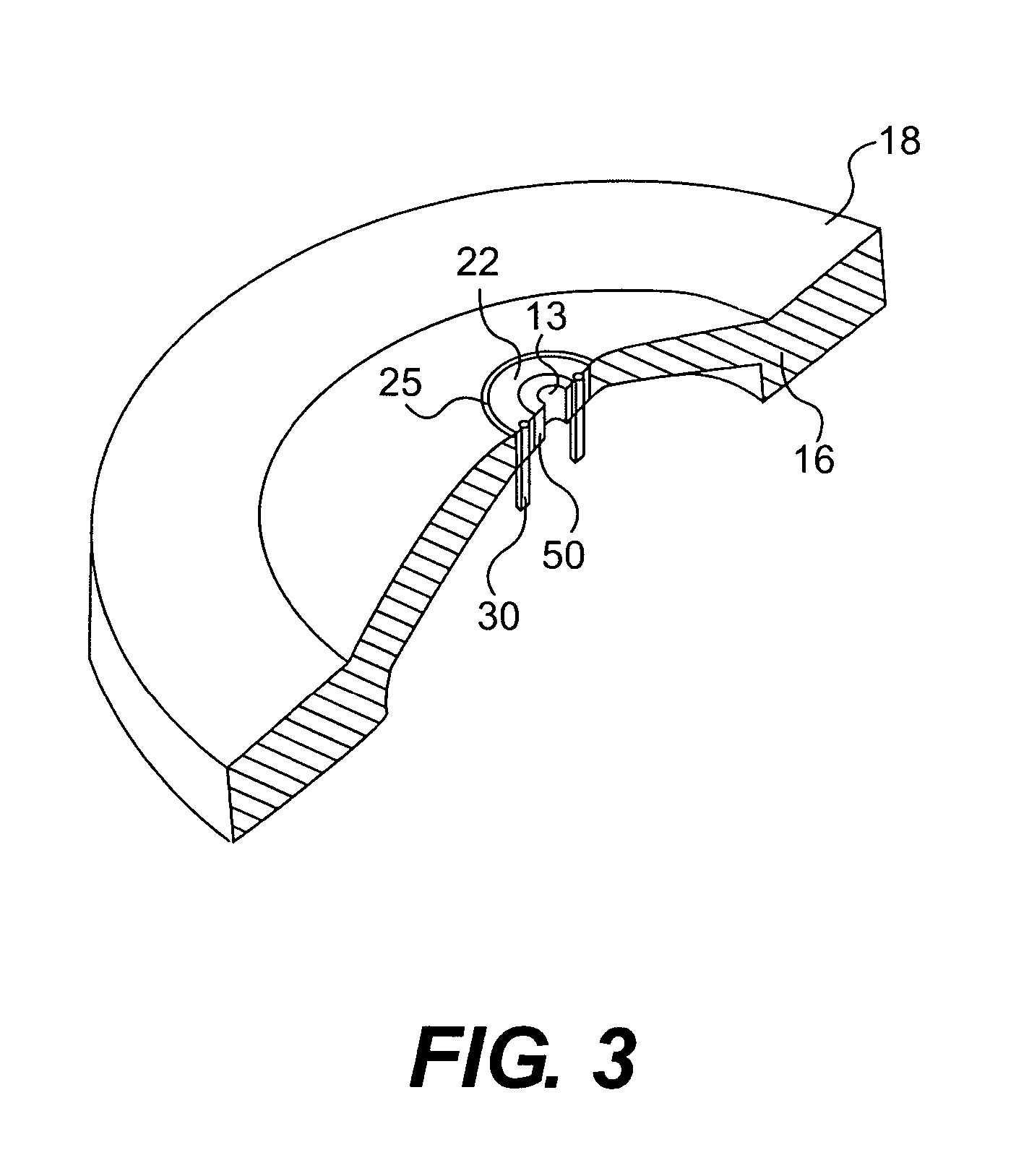Ion trap with built-in field-modifying electrodes and method of operation
- Summary
- Abstract
- Description
- Claims
- Application Information
AI Technical Summary
Benefits of technology
Problems solved by technology
Method used
Image
Examples
Embodiment Construction
[0018] Typically, 3-D ion traps and linear quadrupoles are constructed with close to an ideal hyperbolic surfaces for the surfaces of the quadrupole that faces the trapping volume of the ion trap. The hyperbolic surface facilitates generation of a near ideal quadrupole potential. The ideal quadrupole potential is derived from the equations:
[0019]Φ=Φo(x2−y2) / 2ro2 for a linear quadrupole, or Φ=Φo(r2−2z2) / 2ro2 for a 3-D ion trap, where Φo is the potential applied to the end cap electrode or quadrupole rod surface and ro is the inner dimension of the quadrupole, respectively. The performance of the 3-D ion trap and linear quadrupole are largely determined by the potential distribution inside the quadrupole field. Thus, perturbations in the surface of the end cap or rod impact the quadrupole field and potentially the performance.
[0020] Typically, in a 3-D ion trap mass spectrometer, ions are produced in an external ion source and then the ions are brought into the ion trap. For mass an...
PUM
 Login to View More
Login to View More Abstract
Description
Claims
Application Information
 Login to View More
Login to View More - Generate Ideas
- Intellectual Property
- Life Sciences
- Materials
- Tech Scout
- Unparalleled Data Quality
- Higher Quality Content
- 60% Fewer Hallucinations
Browse by: Latest US Patents, China's latest patents, Technical Efficacy Thesaurus, Application Domain, Technology Topic, Popular Technical Reports.
© 2025 PatSnap. All rights reserved.Legal|Privacy policy|Modern Slavery Act Transparency Statement|Sitemap|About US| Contact US: help@patsnap.com



